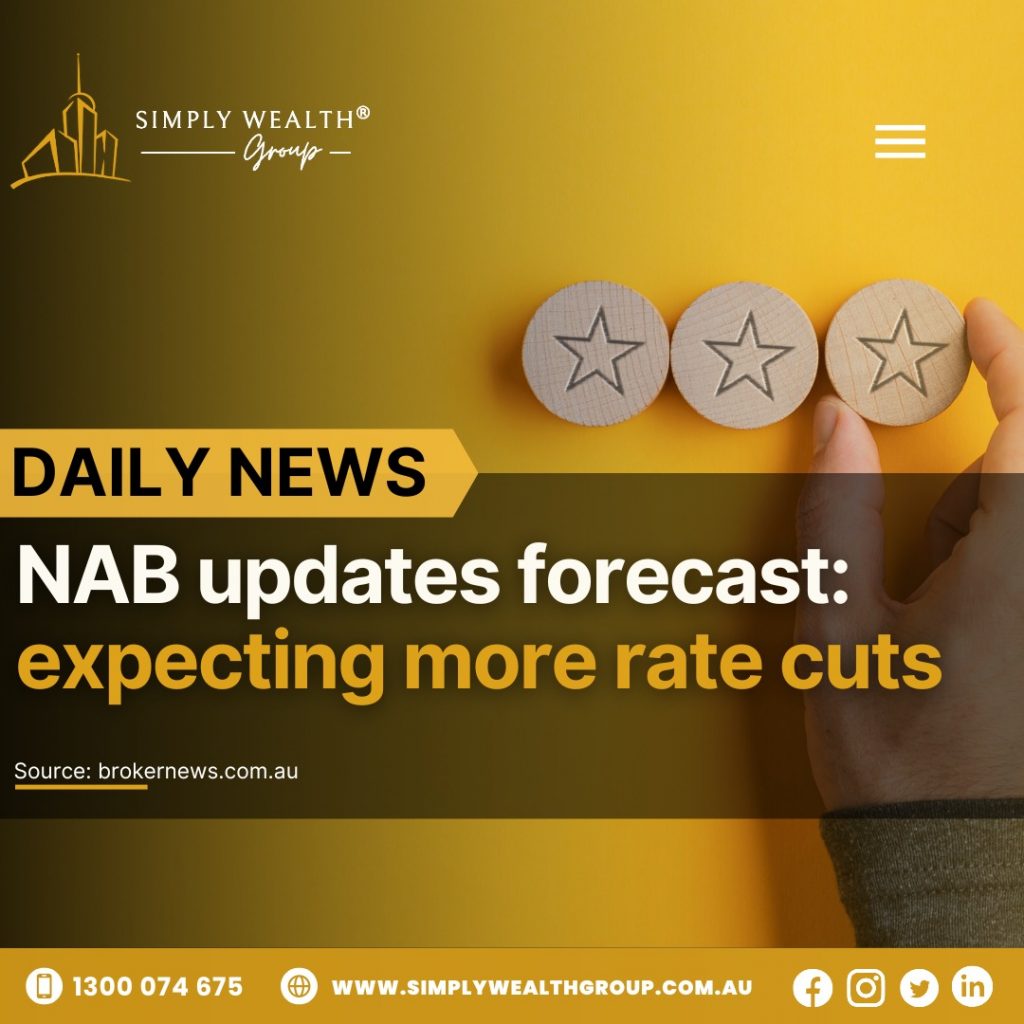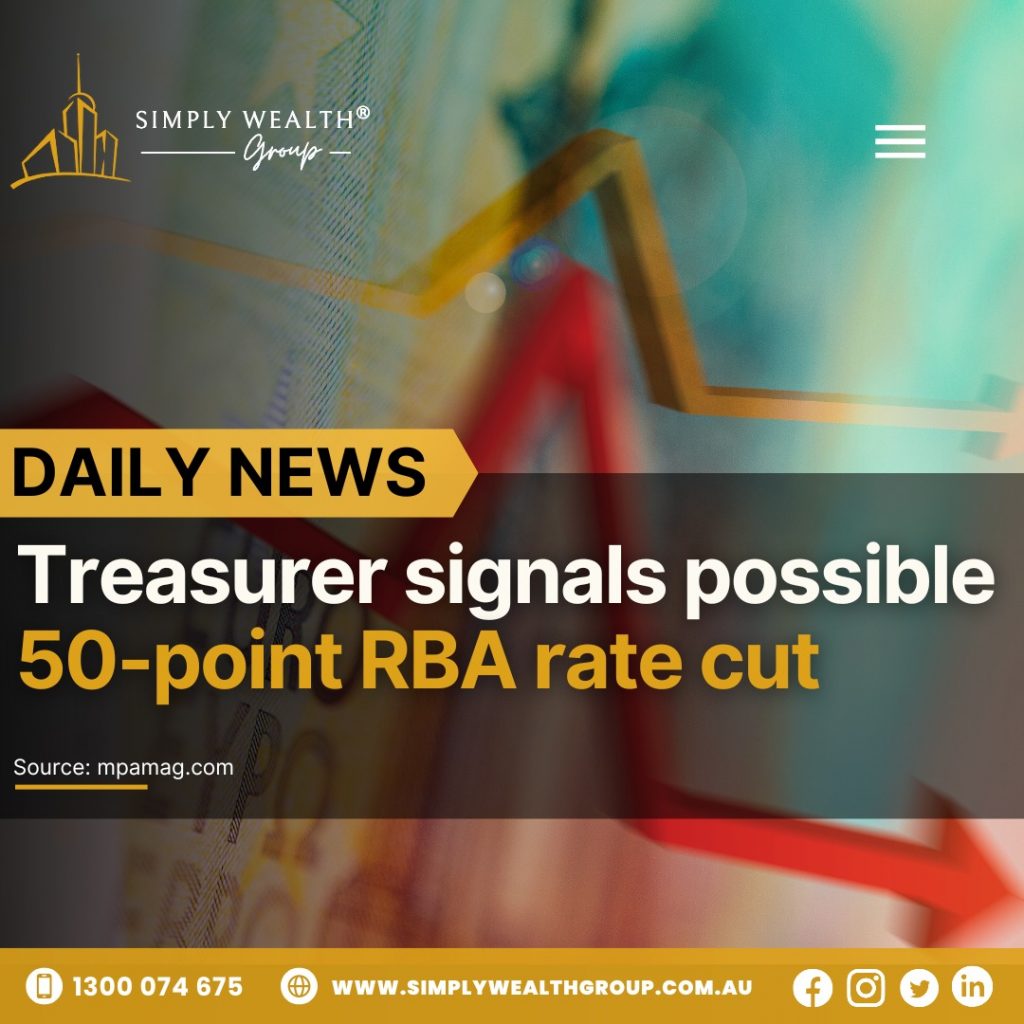EWS UPDATE: Who Really Wins from Labor and Coalition’s Housing Policies?

NEWS UPDATE: Who Really Wins from Labor and Coalition’s Housing Policies? With the 2025 federal election looming, housing has taken center stage as both the Labor Government and the Coalition Opposition unveil competing plans to solve Australia’s ongoing affordability crisis. But beyond the bold promises and political headlines—who truly stands to gain from these proposals? Is it struggling first-home buyers, renters trapped by rising costs, seasoned investors, or developers looking for the next boom? In this comprehensive breakdown, we’ll explore each party’s housing strategy, examine the potential outcomes, and uncover who the real winners might be. Labor’s Approach: Supply-Led and Support-Focused The Labor Government is leaning on a long-term supply strategy backed by direct government intervention. Its primary focus is on delivering affordable and social housing while helping first-home buyers access the market more easily. Key Policies Include: Housing Australia Future Fund (HAFF): A $10 billion investment aimed at delivering 30,000 social and affordable homes in the first five years. Target beneficiaries include older renters, women fleeing domestic violence, and low-income families. Help to Buy Scheme: A shared equity program where the government co-purchases up to 40% of a property, helping eligible buyers reduce their deposit and mortgage burden. National Housing Accord: An agreement to build 1.2 million new homes in five years starting from 2024, with support from state governments and private developers. Increased migration for construction trades to address labor shortages and speed up home builds. 🏠 Who wins under Labor? First-home buyers with limited savings benefit from the shared equity model. Renters and low-income families gain from the ramp-up in social housing. Builders and tradies enjoy long-term job security from government-backed construction projects. Regions and suburbs targeted by large-scale developments are likely to see improved infrastructure and services. Critics argue that these measures, while progressive, are slow to address immediate affordability issues. The HAFF, in particular, is based on market returns, which could vary depending on economic conditions. Coalition’s Approach: Market-Driven and Deposit-Boosting The Coalition is promoting policies centered on private sector incentives and empowering individuals to enter the property market sooner. Key Policies Include: Access to Super for Housing: First-home buyers could withdraw up to $50,000 from their superannuation to put toward a home deposit. Expansion of the First Home Guarantee Scheme: This allows buyers to purchase a home with as little as 5% deposit and no Lenders Mortgage Insurance (LMI), with 50,000 places available per year. Cutting red tape for developers by streamlining planning approvals and fast-tracking land releases. Focus on regional development through incentives to invest in outer-suburban and regional housing markets. 💼 Who wins under the Coalition? Buyers with strong super balances can use their retirement savings to get into the market sooner. Investors and developers benefit from deregulation and quicker project approvals. Regional towns and growth corridors may see increased infrastructure and population growth. Banks and lenders are likely to see a surge in home loan activity due to increased accessibility. However, many economists caution that allowing early access to super may drive up property prices in the short term and erode future retirement security for young buyers. A Tale of Two Strategies At the heart of these policies lies a stark difference in philosophy: Labor believes housing should be supported by government-led solutions—investing in social infrastructure and correcting market failures. The Coalition emphasizes market-led approaches—freeing up supply and helping individuals leverage existing assets to buy sooner. Both parties agree that housing supply needs to increase dramatically, but they differ on who should lead the charge: the state or the market? Who Really Wins? ✅ First-home buyers win across both platforms. Labor helps reduce purchase costs through shared equity, while the Coalition boosts deposit power. ✅ Renters and vulnerable Australians see the greatest benefit under Labor’s social housing initiatives. ✅ Developers and investors may lean toward the Coalition’s deregulated environment and faster project approvals. ✅ Regional communities stand to benefit from both parties’ focus on expanding housing beyond capital cities. Ultimately, the “winners” will depend on who acts fastest—and who can best navigate the shifting policy landscape. For some, these changes will represent the long-awaited break into homeownership. For others, they may be the catalyst to expand a growing portfolio. Final Thoughts Australia’s housing challenge is complex, and no one policy will solve it all. But what’s clear is that voters now have a choice between two distinct housing futures—one rooted in government support and gradual reform, the other in private empowerment and market flexibility. As election season ramps up, staying informed is key. Whether you’re a first-home buyer, investor, or renter, understanding these policies can help you make smarter property decisions in a rapidly changing market. 📌 For more property news, updates, and in-depth market insights, visit: https://bit.ly/4jmpDaT
Australia’s Housing Market Hits a Turning Point – What It Means for You!

Australia’s Housing Market Hits a Turning Point – What It Means for You Australia’s property market has entered a pivotal phase, and the implications are big for homebuyers, sellers, and investors alike. According to Denton Pugh, NAB’s Executive for Home Lending, the national housing market is showing clear signs of a turnaround, supported by improving sentiment, stronger demand, and favourable economic policy settings. This shift marks a significant milestone in what has been a turbulent few years of rising interest rates, constrained supply, and cautious consumer activity. The most prominent signal of this change was the Reserve Bank of Australia’s 25 basis point rate cut in February, the first such cut in a considerable time. While the RBA has been navigating inflationary pressures with a cautious approach, this move indicates the beginning of a more accommodative monetary policy, designed to support growth and affordability across the economy. Importantly, it has had a direct and immediate impact on borrower sentiment. Home Values on the Rise The response from the housing sector has been swift. In March 2025, housing values across Australia increased by 0.4%, according to the latest market data. While the growth is moderate, it’s significant in context—it represents not only a stabilisation of prices but the beginning of a potential growth cycle. Markets that have performed particularly well include Darwin and Adelaide, both showing strong monthly gains. Brisbane and Melbourne have also recorded modest increases, signalling a recovery in some of the country’s most desirable and dynamic cities. This rebound is not uniform, and some markets remain more subdued, but the overall trend is now pointed in a more positive direction 📈. The changing landscape has had a visible effect on lending trends too. NAB has reported a marked uptick in borrowing activity, particularly from first-home buyers and upgraders—a demographic that had been relatively cautious amid high interest rates and cost-of-living concerns. As confidence grows, many buyers are deciding that now is the right time to act, capitalising on lower rates and anticipating future capital growth. Listings on the Rise, Market Activity Picking Up Another encouraging sign is the increase in property listings. According to CoreLogic data referenced in the latest reports, new property listings have jumped 6.1% year-on-year. This signals renewed optimism among sellers, many of whom had postponed putting their homes on the market during the uncertain conditions of 2023 and early 2024. For buyers, this increase in listings means greater choice and less competition, at least in the short term. For sellers, it suggests that the market is heating up again—and that well-presented, appropriately priced homes are once again moving quickly 🏡. What’s Driving This Market Shift? Several factors are contributing to this shift in the property landscape: Interest Rate Easing: The RBA’s decision to cut rates has given financial relief to borrowers and sparked momentum in the housing market. Improved Consumer Confidence: As inflation pressures ease and economic outlooks stabilise, Australians are feeling more secure about making major financial decisions like purchasing a home. Government Support Measures: The proposed expansion of the First Home Guarantee Scheme is another tailwind. By scrapping income and property price caps, the program would make it easier for first-home buyers to access loans without saving a full 20% deposit, thereby improving affordability and access. Continued Population Growth: Australia’s population continues to grow, fuelled by both natural increase and migration. This underpins long-term demand for housing, particularly in major cities and growth corridors. Opportunities and Challenges Ahead While the market is certainly shifting in a positive direction, there are still challenges to consider. Affordability remains a key concern in many parts of the country, especially for younger buyers and those on lower incomes. Likewise, the supply of new housing continues to lag behind demand, which may keep pressure on prices and rents. That said, for many buyers—particularly those with stable incomes and pre-approvals in place—this period could represent a golden window to act. Prices are still relatively stable, lending conditions are improving, and government support is expanding. Investors, too, are beginning to return to the market, seeing opportunities for capital growth and solid rental yields in key regional and metropolitan areas. Final Thoughts Australia’s property market is entering a new phase—one defined by opportunity, cautious optimism, and gradual recovery. Whether you’re looking to buy your first home, upgrade, or invest, the conditions are starting to align in your favour. The key is to stay informed, seek expert advice, and be ready to move when the right opportunity presents itself. With more interest rate cuts possible in the near future and buyer activity on the rise, those who act early may reap the greatest rewards in the coming cycle. 🔗 Read the full article: https://tinyurl.com/4sdybn7w
Australia’s Property Market Surges for Ninth Consecutive Quarter!

Australia’s Property Market Surges for Ninth Consecutive Quarter! Australia’s housing market is showing remarkable resilience and continued strength, with home values experiencing their ninth consecutive quarter of growth. According to CoreLogic, national home prices have surged by a massive 39.1% over the last five years, equating to an average increase of $230,000 in the median home value. This sustained growth is not just a short-term blip but a clear trend that is set to shape the Australian property landscape for the foreseeable future. Key Highlights: National median house price: Increased by 1.0% in the March quarter, reaching an all-time high of $1,170,731. This marks the highest quarterly rise since March 2024. National median unit price: Saw a 1.3% increase to reach $667,241, up by 4.3% annually. Perth and Adelaide continue to lead the pack, outperforming other capital cities with notable price rises. Perth surged by 1.6%, while Adelaide saw an increase of 1.3% in September 2024. These statistics underscore the consistent momentum in the housing market, which has remained largely unaffected by broader economic challenges in recent quarters. The steady appreciation in property values is a testament to the underlying demand for housing, coupled with an environment of restricted supply. What’s Driving the Growth? Several key factors are contributing to the ongoing strength of Australia’s property market: 1. Limited Housing Supply: There has been a substantial shortfall in housing supply, with new listings in capital cities being nearly 10% lower than the previous five-year average. Additionally, the total inventory of properties available for sale has dropped by more than a quarter below average levels. This constrained supply is putting upward pressure on prices as buyers compete for a limited number of homes. 2. Strong Demand: Despite rising prices, demand remains robust. Sales activity in capital cities is now 2.1% above the previous five-year average, indicating that Australians are still eager to buy property. This demand is being driven by both owner-occupiers and investors, who are capitalizing on the potential for long-term capital growth. 3. Interest Rate Cuts: The Reserve Bank of Australia’s decision to reduce interest rates in February 2024 has played a critical role in the market’s rebound. Lower interest rates make mortgages more affordable, leading to higher borrowing capacity for buyers and helping to fuel the growth in home prices. Implications for Buyers and Investors For those looking to buy their first home or invest in property, the current market presents a mixture of opportunity and challenges. Here’s a breakdown of what this surge in home prices means for different groups: First-Home Buyers: The rise in property prices can make entering the market more difficult for first-time buyers. However, with interest rates still relatively low compared to historical averages, it may still be an opportune time to lock in a deal before prices increase even further. Additionally, the strong capital growth prospects offer long-term benefits, meaning that while the market may be more expensive now, the potential for future returns remains high. Investors: For property investors, the current market is an attractive prospect. With limited housing supply and rising demand, properties are likely to continue appreciating in value. Investors can take advantage of lower interest rates to secure financing and increase their returns. The high growth potential in markets like Perth and Adelaide also presents lucrative opportunities for diversifying investment portfolios. Sellers: If you’re considering selling your property, now could be a great time to capitalize on the strong demand and increasing prices. Homeowners who are looking to upgrade or downsize may find that their current properties have appreciated significantly, making it a beneficial time to list. Key Markets to Watch While cities like Sydney and Melbourne traditionally lead the charge in the housing market, Perth and Adelaide are currently outpacing other capital cities in terms of growth. These markets have shown resilience and continue to demonstrate strong demand and limited supply, making them attractive options for both first-time buyers and seasoned investors. What’s Next? As we move into the second half of 2024 and beyond, it’s crucial to stay updated on the latest trends in the property market. While the market has demonstrated extraordinary growth, the factors driving this increase, such as limited supply and interest rate cuts, could evolve over time. CoreLogic’s ongoing reports will provide valuable insights into market movements, and it’s important for buyers, sellers, and investors to stay informed about the changing landscape. Stay Informed & Take Action To make informed decisions, it’s essential to stay updated on the latest market data and trends. You can read the full CoreLogic report and gain valuable insights into the current housing market by clicking here. Whether you’re looking to buy, sell, or invest, navigating the Australian property market requires strategic thinking and a keen understanding of the trends shaping the landscape. If you’re ready to explore your options in this dynamic market, reach out to property experts who can guide you through the process.
Election Showdown: Housing Edition!

Election Showdown: Housing Edition – What It Means for You! As the 2025 Federal Election heats up, the battleground is being drawn not just in parliament—but in your backyard, your suburb, and the homes of everyday Aussies. That’s right: HOUSING POLICY is front and centre, and it’s sparking one of the most impactful debates in recent years. Whether you’re a first-home buyer dreaming of finally getting your foot in the door or a seasoned investor looking to maximise returns, this is your golden opportunity to benefit from the promises and policies pouring out of Canberra. Let’s break it down: What are the major parties saying? And more importantly—how can YOU use it to your advantage? Why Housing Is the Hot Topic in 2025 Housing affordability has become one of the biggest challenges facing Australians. With prices fluctuating, interest rates stabilising, and demand outpacing supply in many regions, all eyes are on the government to take action. Both the Coalition and the Labor Party know that housing wins votes, and they’re doubling down on strategies to fix supply, affordability, and access. This election isn’t just about politics—it’s about property, and your future. What’s Being Proposed? Here’s what both parties are putting on the table to help reshape Australia’s housing future: ✅ Bigger First-Home Buyer Schemes Both parties are proposing expanded grants and support for first-home buyers. Think: Larger deposit subsidies Expanded access to shared equity schemes Reduced stamp duty or even complete waivers in some states Longer loan terms with government guarantees This means getting into the market sooner—with less upfront cost. ✅ Zoning Reforms That Unlock New Suburbs The bottleneck in many cities isn’t just cost—it’s availability. Expect new legislation around zoning flexibility, opening up greenfield areas and under-utilised urban land for development. That’s great news if you’re looking to buy land in emerging suburbs or tap into growth corridors. More land = more choice = more affordability. ✅ Faster Approvals for New Builds Lengthy council approval processes and red tape have delayed countless builds across the country. Now, reforms are being tabled to streamline planning approvals, fast-track permits, and remove barriers to development—especially for medium-density housing. This could lead to: Quicker build timelines More housing stock in the pipeline Stronger competition = better pricing ✅ Tackling Labor & Material Shortages The post-pandemic construction sector has struggled with trades shortages, supply delays, and rising build costs. Both parties are pledging to: Invest in vocational training for trades Support skilled migration pathways for builders Boost domestic production of building materials The result? Projects move faster and cost less—two wins for buyers and developers alike. Why It All Matters (Especially to You) This political tug-of-war is more than just headlines—it’s bringing real, measurable change. If you’re: A first-home buyer – These policies could shave thousands off your upfront costs. An upgrader or downsizer – More options on the market means more flexibility and better prices. An investor – New infrastructure, improved housing supply, and market confidence could fuel capital growth and rental yields. Smart buyers will watch closely, understand the policy impacts, and position themselves to benefit ahead of the curve. What Should You Do Right Now? Stay informed: Follow housing updates as the election unfolds. The right policy could unlock a key opportunity for you. Get pre-approved: With new grants or schemes potentially launching, being pre-approved means you can move fast. Explore titled land or off-market options: If you’re ready to build or invest, now is a great time to secure your position before demand spikes. Take Action Before the Market Moves As we’ve seen in previous elections, markets tend to respond quickly after results are announced. Confidence builds, demand rises, and prices can shift. Don’t wait until the dust settles. Act now to secure your future. 📞 Chat with our expert team about your property goals📲 Call us at 1300 074 675🌐 Visit: simplywealthgroup.com.au📱 Follow us on Instagram and Facebook: @SimplyWealthGroup for ongoing updates, tips, and insights! The Verdict? This election might be political—but the housing policies being shaped today are laying the foundation for your tomorrow. From incentives and grants to reforms and supply boosts, there’s real opportunity in the air. And as the leaders debate, you can decide. Not just at the ballot box—but in how you choose to buy smarter, build faster, and invest wiser in 2025.
Trump’s Tariffs Shake Things Up—But It’s GOOD News for Melbourne Buyers & Investors!

Trump’s Tariffs Shake Things Up—But It’s GOOD News for Melbourne Buyers & Investors! Global events are once again rippling across borders, and this time, it’s Trump’s latest tariff moves making the headlines. While it might seem like just another international shake-up, here’s the silver lining—Australia’s property market, particularly in Melbourne, is quietly shaping up to be a goldmine of opportunity for buyers and investors alike. 💼💡 Trade tensions often trigger economic shifts that can lead to positive changes at home. As uncertainty spreads globally, the Reserve Bank of Australia and the federal government often step in with rate adjustments, buyer incentives, and economic stimulus to keep things balanced—moves that could significantly benefit those ready to act now. 👀💸 Here’s why this global drama could work in YOUR favour: ✅ Lower Interest Rates Incoming?Global pressure could prompt the RBA to cut rates in the coming months, reducing loan repayments and increasing your borrowing capacity—making property more accessible for first-home buyers and investors. ✅ Increased Buyer ConfidenceGovernments tend to react to economic instability with supportive policies like grants, rebates, or easing lending restrictions—giving everyday Australians more confidence to enter the market. ✅ Investment Windows Are OpeningUncertainty often cools competition. With fewer buyers aggressively bidding, you gain a strategic edge in key growth suburbs like Deanside, Craigieburn, Truganina, and Wyndham Vale. ✅ Long-Term Market StrengthMelbourne continues to outperform with strong fundamentals—population growth, infrastructure upgrades, and high rental demand. Even amidst global tension, these factors drive steady capital growth and rental returns. ✅ Smart Timing = Stronger ReturnsGetting in now, while sentiment is still mixed, means you’re ahead of the curve. When confidence returns—and it always does—your early move could pay off in spades. Whether you’re stepping into the market for the first time or expanding a growing portfolio, remember: bad news overseas can be good news here at home. 🌏📈 🚦Don’t wait for the dust to settle—position yourself now to take full advantage of what’s coming. 📖 Full article here 👉 https://tinyurl.com/48n25jsa📲 DM us today to explore your best move in the current market!
NAB Drops Fixed Rates Amid Bold RBA Forecast – What It Means for Borrowers & Investors!

NAB Slashes Fixed Rates Amid Bold RBA Forecast – What It Means for Borrowers and Investors In a decisive move that could shape the course of Australia’s housing and finance markets, National Australia Bank (NAB) has officially reduced its fixed mortgage rates. This adjustment follows growing expectations that the Reserve Bank of Australia (RBA) will begin easing the official cash rate later in 2025, marking a potentially pivotal moment for homeowners, first-time buyers, and investors across the country. As market dynamics shift and economic conditions evolve, NAB’s rate reduction comes at a strategic time, offering a unique opportunity for borrowers to capitalise on lower interest rates before broader market changes take effect. Why Did NAB Cut Its Fixed Rates? The fixed-rate cut is more than just a pricing decision—it’s a strategic forecast of where the market is heading. Here’s what’s driving NAB’s move: 1. Expectations of RBA Rate Cuts Westpac, NAB, and other leading banks have signalled their belief that the RBA may start lowering the official cash rate later this year or in early 2026. While the RBA held firm in its April 2025 meeting, the tone has softened as inflation cools and economic growth begins to moderate. NAB’s move suggests confidence in this outlook. 2. Easing Inflationary Pressures Although inflation surged in recent years, recent data shows it is gradually returning toward the RBA’s target band. Slower consumer spending, tightening credit conditions, and stabilising global commodity prices are all contributing to reduced inflationary pressure—creating more room for rate cuts in the months ahead. 3. Global Economic Headwinds Uncertainty around global trade, geopolitical tensions, and slower-than-expected recoveries in major economies such as the U.S. and China have prompted more cautious economic strategies from central banks globally. The RBA is no exception, carefully assessing these trends before making any significant policy moves. What This Means for Homeowners and Buyers With NAB’s fixed rate cuts now in effect, the lending landscape has shifted—offering both short- and long-term benefits for borrowers. ✅ Lower Fixed Repayments NAB’s decision immediately translates to reduced fixed interest rates for new borrowers, allowing you to lock in a lower monthly repayment and enjoy financial stability for the term of your loan. ✅ Ideal Time to Refinance If your current home loan is on a higher rate, now is the perfect opportunity to refinance and save. Refinancing to a lower fixed rate can potentially reduce your monthly expenses significantly—freeing up funds for other financial goals. ✅ Greater Borrowing Power With reduced interest rates, your borrowing capacity may increase. Whether you’re looking to upgrade your home or invest in property, lower fixed rates can make your next move more attainable and affordable. ✅ Stronger Position for First-Time Buyers For those entering the property market, affordability is key. Lower fixed rates offer certainty and manageable repayments, making it easier to budget and take the leap into homeownership with confidence. ✅ Boost for Property Investors NAB’s fixed rate cuts also spell good news for property investors. Lower borrowing costs improve rental yield margins, enhance cash flow, and can create more flexibility for building and diversifying a property portfolio. What Should You Do Now? With interest rate cuts becoming increasingly likely later this year, it’s crucial to get ahead of the curve. Here’s what smart borrowers are doing right now: Reviewing Their Current Loan – Many homeowners are checking whether they can refinance to a better rate. Locking in a Competitive Fixed Rate – While fixed rates are lower, this is a rare opportunity to secure long-term stability. Getting Pre-Approved – If you’re buying, locking in a rate early can give you an edge in a competitive market. Working with a Mortgage Broker or Property Adviser – Understanding your options and choosing the right product is essential, especially in a changing rate environment. Why Strategic Action Matters Markets are unpredictable—but timing is everything. Acting while fixed rates are low can provide greater financial control, reduce stress from rate fluctuations, and create long-term wealth opportunities through strategic property decisions. NAB’s proactive move signals more than just a price adjustment—it’s a reflection of confidence in an evolving economy, and a clear indicator that now is the time to consider your next financial move. Read the full article here:👉 https://tinyurl.com/3tjz3zs9 📞 Need tailored advice or want to explore your options?Call us today on 1300 074 675 or message us via WhatsApp at +61 488 859 637 🌐 Visit us at: simplywealthgroup.com.au 📱 Follow us for real-time property insights:Instagram @simplywealthgroup | Facebook: Simply Wealth Group Whether you’re buying, refinancing, or investing, the window of opportunity is open—let us help you step through it with confidence.
MFFA: Borrower sentiment improves as refinancing hurdles ease

Great News for Aussie Borrowers: Refinancing Just Got Easier — And Confidence Is Back! As the property market continues to evolve and interest rate uncertainty remains in the headlines, there’s a bright spot for Australian homeowners and buyers: borrower confidence is making a strong comeback. According to a recent report from the Mortgage & Finance Association of Australia (MFAA), a growing number of Australians are feeling optimistic about their financial options—especially when it comes to refinancing and securing better deals. So, what’s fueling this renewed sense of optimism? It’s a combination of easier refinancing processes, more flexible lender policies, and a highly competitive loan environment. All these factors are empowering borrowers to take control of their mortgage journey and make smarter decisions about their financial future. 🏡📈 What’s Behind the Bounce in Borrower Confidence? Recent policy changes and improved systems have transformed the refinancing experience for many Australians. The once lengthy and complex process has become far more streamlined, giving homeowners the confidence to explore better options and switch to more favourable home loan products with ease. 🔄✨ Here are some of the key drivers of this renewed borrower confidence: ✅ Improved Access to Competitive Rates – With lenders actively competing for business, borrowers are now in a stronger position to negotiate lower interest rates, potentially saving thousands over the life of their loan. 📉💰 ✅ Streamlined Refinancing Process – Advances in technology and simplified documentation mean that refinancing no longer has to be an overwhelming ordeal. Many lenders now offer digital application processes, faster approvals, and clearer communication every step of the way. 📲🖋️ ✅ Greater Financial Flexibility – Refinancing isn’t just about rate shopping—it’s also about reshaping your financial strategy. Many homeowners are using the process to consolidate debt, access equity for renovations or investments, or adjust their loan terms to suit their lifestyle. 🔧🏘️ ✅ More Transparent Lending Environment – As regulations improve and borrower education increases, Australians are becoming more aware of their rights and the wide range of options available. This has helped build trust in the system and foster a more proactive financial mindset. 📚🔍 What This Means for Homeowners and Investors Whether you’re a first-time buyer, a seasoned investor, or someone looking to refinance an existing loan, this shift presents a unique opportunity. With borrower sentiment improving and competition among lenders heating up, there’s never been a better time to explore your options. 🔥🏦 For homeowners, this could be the perfect moment to: Reduce monthly repayments by switching to a lower rate Access equity for home upgrades or new investments Refinance into a loan product that offers greater flexibility or features Consolidate high-interest debt to improve cash flow and simplify your finances For investors, easier refinancing and better loan deals can enhance cash-on-cash returns, improve borrowing power, and offer a chance to diversify your portfolio while interest rates are still relatively attractive. Stay Informed, Stay Empowered In a market that’s constantly shifting, information is power. Keeping up with lending trends, understanding your options, and regularly reviewing your loan structure are all crucial steps toward long-term financial success. If you’re unsure where to start, seeking guidance from a trusted mortgage expert can make all the difference. Whether you’re looking to refinance, enter the market, or expand your investment strategy, having a tailored financial roadmap puts you in the driver’s seat. 🚗📍 Let’s Explore Your Options Together We’re here to help you navigate the refinancing process, find the most competitive deals, and build a strategy that aligns with your goals. If you’re ready to take control of your mortgage and unlock better financial outcomes, let’s talk. 📲 Call us: 1300 074 675💬 WhatsApp: +61 488 859 637🌐 Visit us: simplywealthgroup.com.au📱 Follow us: Instagram @SimplyWealthGroup | Facebook Simply Wealth Group 📖 Read the full article here: https://tinyurl.com/584jxa8a
NAB Revises Forecast: More Rate Cuts on the Horizon?

NAB Revises Forecast: More Rate Cuts on the Horizon? As the economic climate shifts and inflation shows signs of further softening, NAB (National Australia Bank) has updated its outlook—now anticipating a greater number of interest rate cuts over the coming year. This pivot in monetary policy is a key development that could significantly reshape the Australian property and lending markets in 2025. With the Reserve Bank of Australia (RBA) poised to adjust rates downward more aggressively than previously expected, homebuyers, investors, and mortgage holders may soon find themselves in a more favourable position. But what does this forecasted shift really mean for you? Let’s break it down. 📉🏡 Lower Repayments Could Bring Relief to Homeowners One of the most immediate and tangible impacts of rate cuts is on monthly mortgage repayments. As interest rates decline, variable-rate home loan holders can expect to see a reduction in their financial burden, offering welcome breathing room in household budgets. 💸 This relief is especially critical at a time when many Australians have been navigating cost-of-living pressures, including higher food, fuel, and utility prices. A drop in repayments not only lightens the load but may also free up disposable income for savings or spending, stimulating broader economic activity. 🛍️🧾 Increased Borrowing Power for Buyers Lower interest rates can significantly increase borrowing capacity, especially for first-home buyers and upgraders. Lenders often assess a borrower’s ability to repay based on current rates, so when those rates fall, the maximum loan amount available generally rises. This change can make homeownership more attainable for many Australians who have been sitting on the sidelines or struggling to enter a competitive market. 🏠💪 And it’s not just about getting a bigger loan—lower rates mean better deals, especially for buyers who are well-prepared with strong credit profiles and savings. This could be the perfect time to review your options and pre-approval status. 📊🔍 Property Market Momentum Could Return A reduction in interest rates tends to spark renewed energy in the property market, with more buyers entering the fray thanks to improved affordability. If rates continue to fall as NAB expects, we may see another wave of buyer momentum in 2025, particularly in suburbs where demand has been pent-up due to affordability constraints. This could also lead to price stabilisation or even renewed growth, especially in growth corridors and major regional centres. Investors and homebuyers who act early could benefit from securing property before broader competition heats up again. 🔁📈 A Strategic Window for Property Investors For property investors, lower interest rates not only improve cash flow but can also enhance rental yield returns—particularly if rents remain elevated while borrowing costs drop. 📉💼 Savvy investors could take this opportunity to expand their portfolios while enjoying lower repayments, improved servicing capacity, and stronger net rental income. In many cases, properties that were previously cashflow-neutral or slightly negative could move into positively geared territory. And with increased buyer activity forecasted, now may also be an excellent time to secure high-demand rental properties in locations with low vacancy rates. 📍🏘️ Timing is Everything—Stay Ahead of the Curve While NAB’s revised forecast isn’t a guarantee, it’s a strong signal that market conditions are changing. Whether you’re considering a new home purchase, a refinance, or an investment strategy update, the next few months may represent a strategic window of opportunity. Understanding how to capitalise on these changes—and preparing before the rest of the market reacts—could make all the difference to your financial outcome. 🔎 Want to learn more about NAB’s revised forecast and what it means for your plans?📖 Read the full article here 📞 Let’s chat strategy – Call us at 1300 074 675💬 Or message us via WhatsApp: +61 488 859 637🌐 Visit: simplywealthgroup.com.au📱 Follow us: Instagram @SimplyWealthGroup | Facebook Simply Wealth Group
Australian Home Values Soar 39.1% Over Five Years: What This Means for Homebuyers & Investors!

Australian Home Values Soar 39.1% Over Five Years: What This Means for Homebuyers & Investors Australia’s housing market has once again proven its resilience and long-term strength, with CoreLogic’s latest data revealing a staggering 39.1% increase in national home values over the past five years. This translates to an eye-opening $230,000 boost in the median dwelling price—an extraordinary shift that’s transforming both opportunities and challenges for homeowners, investors, and those aspiring to step onto the property ladder. So, what does this major growth mean for you? Whether you’re a homeowner sitting on unexpected equity, a savvy investor planning your next move, or a hopeful buyer navigating the high-priced landscape, there’s a lot to unpack. 📈🏡 Homeowners Enjoy Equity Windfalls One of the biggest winners from this growth trend has been existing homeowners. With property values climbing by nearly 40%, many Australians are finding themselves in a stronger financial position than they were just a few years ago. 🏠💰 That increase in equity can be a game-changer. It opens doors to refinancing opportunities at better rates, funding for home improvements or renovations, and even leveraging that equity to invest in a second property. For those who bought early and held their ground, the reward has been significant. First-Home Buyers Face Growing Affordability Pressure While current homeowners are seeing the benefits, first-time buyers are facing a tougher landscape. With the median dwelling now costing around eight times the national median income, affordability has become a serious concern. 🧾🚫 Many young Australians are finding it increasingly difficult to save for a deposit or qualify for a mortgage under tighter lending standards. This has created a strong demand for government support initiatives like the First Home Guarantee or stamp duty concessions to remain in place—and potentially even expand—to help level the playing field. Regional Australia Shines Bright It’s not just the big cities driving growth. In fact, some regional markets have outperformed capital city counterparts, delivering strong returns at more accessible entry prices. 🌄🏘️ With the rise of remote work and flexible hybrid arrangements, many Australians are choosing lifestyle locations over CBD proximity. This has helped drive demand in regional hubs such as Ballarat, Bendigo, Newcastle, and the Sunshine Coast—areas that continue to show promise for investors seeking strong growth with more affordable entry points. For savvy buyers and investors, these regional areas present real opportunities: better value for money, high tenant demand, and the lifestyle appeal that continues to attract both renters and owner-occupiers. Market Forces Still in Play The meteoric rise in home values hasn’t occurred in a vacuum. A range of factors have contributed to this trend: record-low interest rates during the pandemic years, undersupply of new housing, population growth through immigration, and an overall strong economy. 📊🏦 While interest rates have since increased to combat inflation, the supply-demand imbalance continues to support housing prices, especially in undersupplied metro areas. That means even as rate hikes slow growth in some regions, long-term fundamentals remain strong. What Should You Do Now? In this dynamic environment, your next steps should be guided by strategy, not emotion. Here are some key takeaways based on your current situation: Homeowners: Consider speaking to a mortgage broker or financial planner to explore refinancing, debt consolidation, or equity unlock options. First-Home Buyers: Don’t lose hope—explore regional markets, government incentives, and new-build opportunities that could offer more accessible price points. Investors: Look for areas with low vacancy rates, infrastructure investment, and long-term population growth—these fundamentals remain essential even in a high-growth market. Sellers: If you’re thinking of selling, it could be a great time to capitalise on recent value gains—especially in high-demand suburbs. As the Australian property market continues to evolve, staying informed and planning ahead is more important than ever. The right move today could set you up for years of financial security and growth. 📈🔑 📖 Dive into the full article here: https://bitly.cx/BVG9P📞 Ready to take action? Let’s talk — 1300 074 675🌐 Explore more at: simplywealthgroup.com.au📱 Follow us on Instagram and Facebook @SimplyWealthGroup for daily insights and updates!
Big Rate Cut on the Horizon? What It Could Mean for Aussie Homebuyers & Investors

Big Rate Cut on the Horizon? What It Could Mean for Aussie Homebuyers & Investors! The Treasurer has recently hinted at the possibility of a significant 50-basis point rate cut, sending waves through the markets and creating a buzz in the property sector. With growing global trade tensions and shifting economic conditions, the Reserve Bank of Australia (RBA) might be gearing up to make a bold monetary move that could reshape the Australian housing landscape in a major way. But what does this potential rate cut mean for YOU as a homeowner, investor, or first-time buyer? Let’s break it down and explore the possibilities. Mortgage Relief – Lower Interest Rates Could Ease Financial Pressure For many homeowners, the idea of a rate cut brings much-needed relief. If the RBA slashes rates, it could ease financial pressure for those with variable-rate home loans, reducing their monthly repayments. In some cases, homeowners could see a significant reduction in the amount they pay each month, freeing up more disposable income. This could be a game-changer, especially for those struggling with higher mortgage payments in the wake of previous rate hikes. As the cost of borrowing decreases, homeowners may have more flexibility to manage their finances, pay down debt, and even invest in other financial goals. For first-home buyers, a rate cut could also make it more affordable to enter the market and secure that dream home. With less pressure on monthly repayments, buyers can stretch their budgets further, which could make the difference between securing a property or continuing to rent. Boosted Borrowing Power – More Aussies Could Qualify for Bigger Loans One of the most exciting outcomes of a rate cut is the potential boost in borrowing power. When interest rates drop, it becomes easier for buyers to qualify for larger loans. Lenders typically base their loan approvals on the borrower’s ability to repay, which is heavily influenced by the interest rate. With lower rates, monthly repayments decrease, and as a result, buyers may be able to borrow more. This opens up opportunities for first-time buyers to purchase in higher-value areas or secure properties with more space. For investors, a rate cut could make it easier to secure financing for additional investment properties, expanding their portfolios. Property Market Push – Could We See a Buyer Surge? A rate cut could also spark a surge of activity in the property market. As borrowing costs fall and more buyers enter the market, competition for available homes could heat up. In particular, the affordable housing segment may see an increase in demand as more people seek to take advantage of lower rates. This could lead to increased property prices in certain areas, particularly in suburbs that have been historically overlooked. For investors, this could present a fantastic opportunity to purchase properties at a lower cost, with the potential for capital growth as demand increases. Investors who act quickly may benefit from improved rental yields and long-term price growth, particularly if they target areas poised for infrastructure development or population growth. Economic Stimulus – Supporting Spending, Stability, and Confidence Beyond the property market, a rate cut could serve as an economic stimulus, boosting spending and confidence across the economy. With lower borrowing costs, consumers may feel more comfortable making significant purchases, from home renovations to new vehicles. This could help stimulate the retail, construction, and manufacturing sectors, contributing to broader economic growth. Moreover, a rate cut could provide the stability needed to reassure both consumers and businesses during uncertain times. As global trade tensions and geopolitical issues continue to affect economies worldwide, the RBA’s decision to reduce rates could signal a commitment to maintaining domestic stability and fostering confidence in the Australian economy. What Does This Mean for You? As we look ahead to a possible rate cut, now is the perfect time to reassess your financial strategy. Homebuyers, investors, and those looking to refinance should keep a close eye on the RBA’s next moves and consider acting strategically to make the most of these favorable conditions. Homebuyers: If you’ve been waiting to enter the market, this could be your chance to secure a property at a lower cost with reduced mortgage repayments. Don’t wait too long, as property prices could start rising as demand picks up. Investors: A rate cut could present an excellent opportunity to purchase additional properties with favorable financing terms. With the potential for increased rental demand and capital growth, the property market could offer excellent returns. Homeowners: If you’ve been feeling the pressure of higher repayments, a rate cut could provide relief. Take the time to review your mortgage and consider refinancing options to take advantage of the lower rates. As the economic landscape evolves, staying informed and being proactive can help you make the most of the opportunities ahead. Conclusion: Stay Ahead of the Curve The potential for a 50-basis point rate cut could significantly impact Australia’s housing and financial markets. With lower interest rates, more buyers could enter the market, homeownership may become more affordable, and investors could seize opportunities for long-term growth. Stay updated with the latest property news and insights to ensure you’re making the best financial decisions. Whether you’re looking to buy, invest, or refinance, now is the time to strategize and position yourself for success. 📖 Read the full article here: https://tinyurl.com/4xac4xnx 📞 Ready to make your next move? Let’s chat — 1300 074 675🌐 Visit us: simplywealthgroup.com.au📱 Follow us @SimplyWealthGroup for daily property insights and updates!

